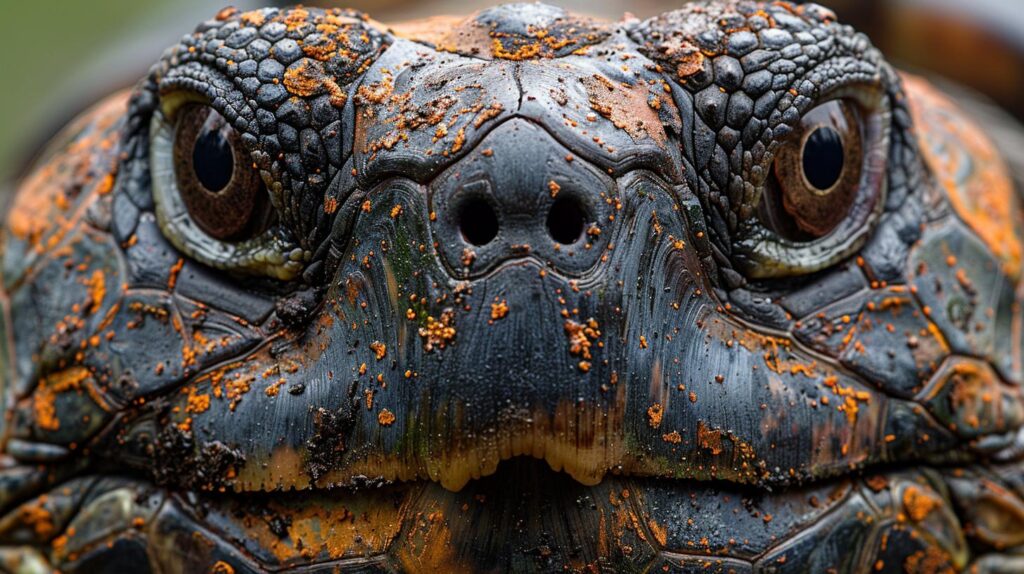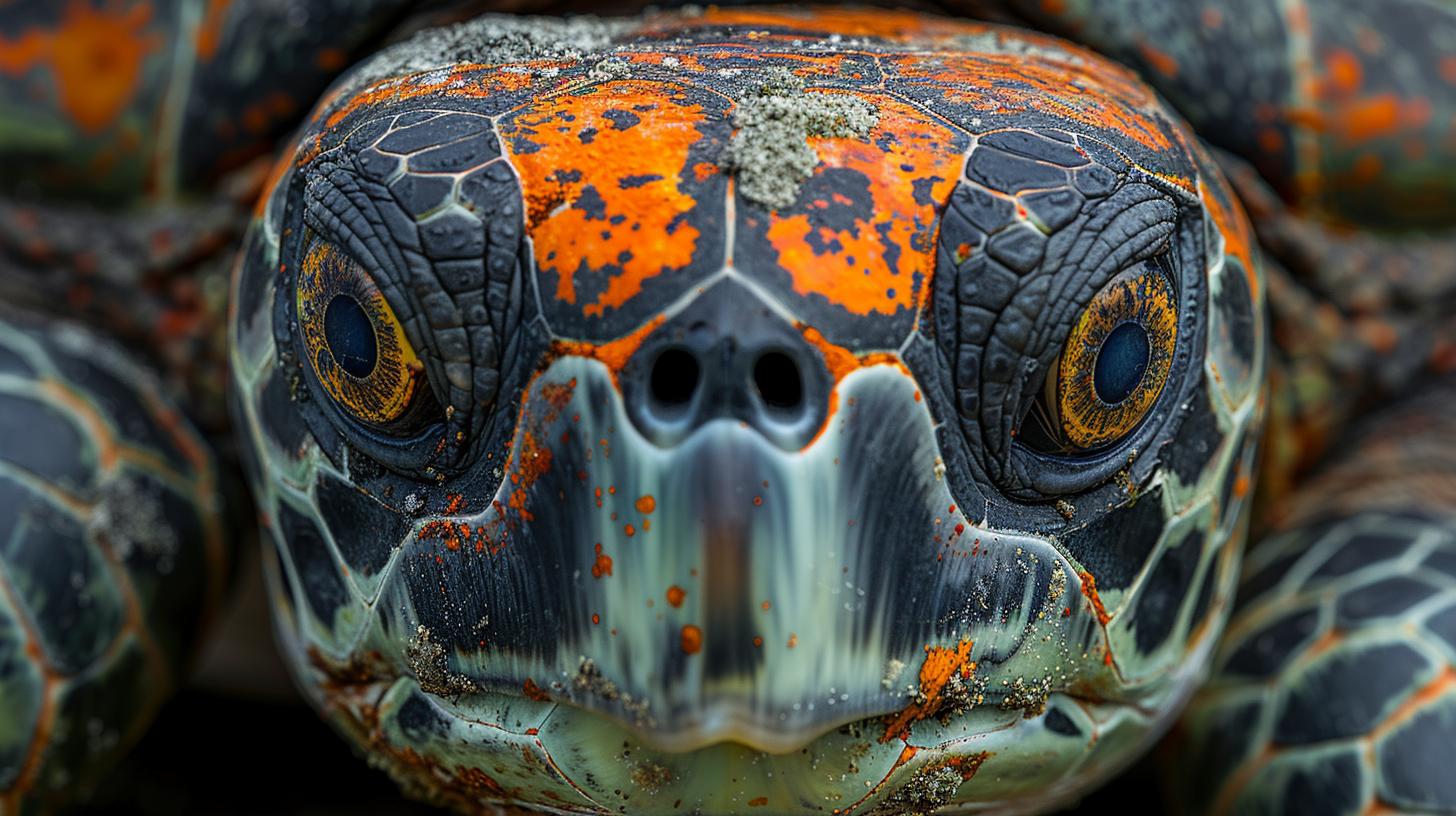5 Key Tips to Prevent Turtle Shell Rot

Understanding Turtle Shell Rot
From pet enthusiasts to wildlife caretakers, understanding turtle shell rot prevention is paramount. Often swept under the rug, this common health problem can severely impact turtles both in the wild and within domestic environments. Defined as a bacterial or fungal infection affecting the shell, turtle shell rot, if neglected, can be lethal.
This critical condition not only compromises the structural integrity of a turtle's shell but also its overall well-being, underscoring the need for immediate attention and care. Through this enlightening journey into the nuances of shell rot, we aim to unravel why preventative measures are not merely beneficial but essential.
Identifying signs of shell rot requires a vigilant eye and an informed understanding of what to look for. Symptoms range from discolored patches on the shell to soft spots and foul odors emanating from it. Behavioral changes such as lethargy or reduced appetite can also signal underlying issues like shell rot.
Recognizing these signs early plays a pivotal role in halting its progression and mitigates adverse outcomes for these serene reptiles. The adage "prevention is better than cure" rings especially true here; timely detection empowers pet owners and caretakers to administer necessary interventions before conditions worsen.
Maintaining a pristine habitat emerges as another cornerstone in preventing turtle shell rot. A habitat mired in uncleanliness serves as a breeding ground for bacteria and fungi, culminating in infections like shell rot.
This section outlines practical strategies aimed at fostering a clean living space for turtles, highlighting how simple adjustments such as regular water changes and appropriate filtration contribute significantly to sidestepping this pervasive issue. It stresses that creating a conducive environment is not just about cleanliness but involves setting up space that mirrors their natural ecosystem, which fundamentally deters the onset of illnesses like shell rot.
Identifying the Signs of Shell Rot
Understanding and recognizing the signs of shell rot in turtles early on is paramount to preventing and treating this condition effectively. Shell rot, medically referred to as ulcerative shell disease, is a serious infection that can severely impact both captive and wild turtles if left untreated.
It stems from fungal and bacterial infections that eat away at the keratin coating of the shell, leading to serious health issues or even fatality. Early detection not only affords a better prognosis for recovery but also significantly reduces the risk of spread to other areas of the shell or into the turtle's body.
For turtle owners, being able to identify the onset of shell rot is crucial. This involves closely observing their pet for any changes in behavior or appearance that could indicate health issues.
Knowing what symptoms to look out for plays a vital role in maintaining not just the health of their shell but their overall well-being too. By taking prompt action upon noticing these signs, owners can ensure quick medical intervention, which substantially increases chances of recovery and minimizes potential suffering.
Visual Changes on the Shell
One of the clearest indicators of shell rot is noticeable changes in the appearance of your turtle's shell. These changes may manifest as soft white or gray spots which progressively darken over time. As the condition worsens, these patches might develop into deeper pits, signaling more severe damage beneath the surface layer of keratin. Additionally, a foul odor emanating from these lesions is often present and serves as another red flag pointing towards an infection requiring immediate attention.
Behavioral Signs
Beyond physical alterations to the shell's appearance, affected turtles may exhibit behavioral changes indicative of discomfort or pain due to their condition. These behaviors might include reluctance to feed, lethargy, increased basking time far beyond their normal routine, or even aggressive reactions when touched near affected areas on their shell. Such signs should prompt turtle owners to seek veterinary assistance promptly as they reflect underlying health issues needing professional intervention.
Key in turtle shell rot prevention lies not only in recognizing these warning signs but also in understanding how lifestyle factors contribute significantly to mitigating risks associated with this ailment. Maintaining cleanliness within habitats, offering balanced nutrition specifically geared towards supporting robust shell health, and ensuring proper lighting conditions are all foundational measures for protecting your reptilian companion from falling prey to such distressing conditions.
The Role of a Clean Habitat in Prevention
In the quest to maintain a healthy lifestyle for turtles, the role of a clean habitat cannot be overstated. Not only does it provide a pleasant environment for these creatures, but it also plays a pivotal role in turtle shell rot prevention.
A dirty or improper setup can foster harmful bacteria and fungi growth, leading to the onset of shell rot and other health issues. Therefore, understanding and implementing best practices in habitat maintenance are key steps toward ensuring your turtle's well-being.
Creating an ideal living space for turtles involves regular cleaning and monitoring of their environment. Water quality is particularly crucial for aquatic species; thus, owners should employ efficient filtration systems and perform frequent water changes. Additionally, removing uneaten food promptly prevents decomposition and contamination.
For turtles living in both aquatic and terrestrial habitats, maintaining the right balance of dry and wet areas is essential to avoid overly damp conditions that can promote the growth of pathogens leading to shell rot. By addressing these aspects diligently, turtle owners can create a sanctuary that significantly reduces the risk of disease.
The implementation of proper sanitation measures extends beyond just cleaning; it includes designing a habitat that mimics natural conditions as closely as possible. This may involve using substrates that are easy to clean yet provide comfort to the turtle, along with ensuring there is adequate space for movement and basking under UVB lights. These elements not only prevent stress but also strengthen the turtle's immune system against infections like shell rot.
| Prevention Strategy | Benefits |
|---|---|
| Regular Habitat Cleaning | Reduces harmful bacteria/fungi growth |
| Mimicking Natural Conditions | Reduces stress and strengthens immunity |
| Adequate Filtration & Water Changes | Ensures high water quality; key for aquatic turtles |
By focusing on *the role of a clean habitat*, turtle owners take a significant step toward turtle shell rot prevention. This method goes hand-in-hand with nutrition management, temperature regulation, and regular health evaluations by wildlife veterinarians to form an effective defense against this condition-affirming that with attentive care and effort, preventing shell rot is indeed achievable.

As this discussion unfolds further into other preventive measures like optimal nutrition for improving shell health, remember that prevention starts at home with cleanliness as its cornerstone.
Optimal Nutrition for Shell Health
In the pivotal journey of ensuring the utmost health and longevity for our shelled friends, understanding the profound impact of nutrition cannot be overstated. Just as in humans, a balanced diet plays an instrumental role in the overall well-being of turtles, and particularly in the strength and integrity of their shells.
The adage "You are what you eat" holds true for these reptiles; their shell, a critical aspect of their anatomy, requires specific nutrients to maintain its durability and protect against diseases such as shell rot. It's essential to delve deep into the nuances of what constitutes optimal nutrition for turtles, aiming not only to sustain them but to fortify their natural armor against afflictions.
Turtle Shell Rot Prevention through dietary means underscores not just the avoidance of harmful conditions but embodies a proactive stance on nurturing radiant health from within. A turtle's diet influences its growth, energy levels, and immune system-all key factors that contribute directly to shell health.
Nutritional deficiencies can lead to weakened shells, making them more susceptible to infections and diseases like shell rot. Therefore, crafting a diet rich in essential vitamins and minerals becomes paramount in fostering robust shell development and thwarting potential threats before they escalate.
Vital Nutrients for Shell Strength
At the core of a turtle's dietary needs are calcium and vitamin D3-two indispensable components for developing strong bones and shells. Calcium serves as the primary building block for shell fortification, while vitamin D3 aids in its absorption from food sources or supplements.
Feeding turtles foods high in these nutrients is crucial; leafy greens such as kale and dandelion leaves offer ample amounts of calcium, while supplements or specialized turtle pellets can ensure adequate vitamin D3 intake. Emphasizing these vital elements within their feeding regimen vastly improves protection against conditions like turtle shell rot prevention, laying a solid foundation for their continued health.
Balancing Diet: A Key Element
Beyond singular nutrients, maintaining a diversified diet enriched with proteins, fats, vitamins (A & E), and minerals shapes a comprehensive approach to turtle nutrition. For aquatic species especially; include offerings like small fish or shrimp as protein sources alongside plant-based items ensure this variety. Each species might have specific dietary preferences implicating unique nutritional demands; hence understanding your turtle's requirements facilitates tailored nourishments that address personal needs proficiently.
Supplements: Filling Nutrition Gaps
Finally yet importantly is incorporating supplements into your turtle's diet cautiously: valuable assets when used correctly to account for any potential deficiencies or enhance already balanced meals.
While over-supplementation poses risks by potentially causing hypervitaminosis or other nutrient imbalances; working closely with a veterinarian familiar with reptiles can guide appropriate supplement use tailored specifically toward prevention efforts including bolstering defenses against shell deteriorative conditions like shell rot. This holistic view acknowledges multiple facets contributing towards achieving peak nutritional status translating into robust shell health-a testament to preventative care excellence through proper feeding practices.
Importance of Proper Lighting and Temperature
Understanding the pivotal role of proper lighting and *optimal temperature* conditions in the habitat of a turtle is fundamental to preventing health issues such as shell rot. Turtles are ectothermic creatures, relying entirely on their environment to regulate their body temperature.
This dependence makes the control of ambient temperature within their living space critical for their physiological well-being. Equally important is ultraviolet B (UVB) lighting, which facilitates the synthesis of vitamin D3, aiding in the absorption of calcium for a strong shell and skeletal health.
Creating an environment that closely mimics a turtle's natural habitat can significantly reduce the chances of turtle shell rot prevention. For instance, aquatic turtles require water temperatures between 75°F and 85°F (24°C-29°C), with basking spots that are slightly warmer, ranging from 85°F to 95°F (29°C-35°C).
On the other hand, terrestrial turtles thrive in environments where daytime temperatures hover around 70°F to 85°F (21°C-29°C), with night temperatures not plummeting below 60°F (15°C).
Implementing heating lamps or aquatic heaters can help maintain these ideal conditions. However, monitoring is key; frequent checks ensure that temperatures remain within safe bounds for your pet.
Moreover, UVB lighting cannot be overlooked when discussing turtle shell rot prevention strategies. A UVB light source is essential for turtles, especially those kept indoors without direct sunlight exposure. UVB lights simulate natural sunlight allowing turtles to produce vitamin D3, crucial for metabolizing calcium efficiently. Without it, turtles may suffer from metabolic bone disease or soft shells-a precursor to more severe conditions like shell rot. Therefore, including a dedicated UVB lamp in your turtle's habitat is indispensable.
- Use a reliable thermometer to monitor both air and water temperatures regularly.
- Replace UVB bulbs every six months to ensure they provide sufficient levels of ultraviolet light.
By adhering to these guidelines concerning temperature and lighting within a turtle's habitat, pet owners can play a proactive role in safeguarding their turtles against health issues like shell rot. It's not merely about replicating natural habitats but also about fostering an environment where turtles can thrive healthily over long haul periods-underscoring the significance of these factors in holistic *reptilian care*.

With this foundation laid down focusing on adequate dietary regimes will further bolster efforts aimed at turtle shell health conservation-bridging smoothly into our next discussion piece centered on *Optimal Nutrition for Shell Health*.
Regular Health Checks and Early Intervention
Ensuring that your turtle undergoes regular health checks is vital in the early detection and intervention of potential shell rot. This preventive measure cannot be overstated; it plays a critical role in maintaining not just the integrity of their shells but their overall health. Veterinarian visits should be scheduled at least once a year, or more frequently if any signs of distress or illness arise.
An experienced reptile veterinarian can offer invaluable expertise, spotting early signs of shell rot that might not yet be visible to the untrained eye. Early diagnosis often leads to simpler, more effective treatment options and can prevent the condition from worsening.
One pivotal aspect of these health checks includes detailed shell assessments, allowing for thorough examination for any lesions, discolorations, soft spots, or abnormalities that could indicate beginning stages of shell rot. These veterinary visits also present an excellent opportunity to discuss and optimize your turtle's care routine. Discussions about turtle shell rot prevention may cover updates on habitat cleanliness, diet adjustments, and ensuring your setup meets all requirements for necessary UVB exposure and temperature regulation.
Incorporating preventive practices into your turtle's care regimen is similarly essential. Here are a few proactive steps to consider:
- Daily Observations: Regularly monitor your turtle for any changes in behavior or appearance that could signal health issues.
- Nutritional Balance: Feed turtles a balanced diet rich in vitamins and minerals to fortify their shells against deterioration.
- Habitat Maintenance: Keep the living environment clean, well-maintained, and free from contaminants that could contribute to the development of shell rot.
Adopting these measures alongside routine veterinary care significantly bolsters your capacity for *turtle shell rot prevention*. Keeping track of your turtle's health encourages prompt action at the first sign of irregularities, potentially saving you from more severe complications down the line.
Not only do these preventative strategies foster a healthier life for your beloved reptile companions, but they also ensure you enjoy more quality time with them without the looming concern of shell-related ailments disrupting their well-being or happiness.
Turtle Shell Rot Prevention
In wrapping up this discussion on turtle shell rot prevention, it's evident that the health of our shelled companions hinges on a few but fundamental aspects of care. Ensuring a clean habitat, providing nutritionally balanced food, maintaining proper lighting and temperature conditions, and committing to regular veterinary checks are not just recommendations; they're pillars of preventive care that stand between a thriving turtle and one battling shell rot.
This comprehensive approach underlines the article's insight into preventing a condition that can significantly compromise the quality of life for these resilient reptiles.
Turtle owners who prioritize these preventive measures will find themselves well-equipped to safeguard their turtles against shell rot. It's more than just about adhering to care guidelines; it's about nurturing an environment where your pet can flourish free from the threats posed by this disease.
Remember, knowledge is power-the more we understand about the risks and signs of shell rot, combined with proactive steps toward turtle shell rot prevention, the better we can ensure our turtles lead long, healthy lives.
Feel inspired to make a difference in your turtle's life? Dive deeper into our range of articles dedicated not only to reptile care but also to broadening your understanding of how best to nurture the well-being of various pets.
From detailed guides on specific health conditions to expert tips on creating enriching habitats for your animal companions, our website is a hub for pet lovers seeking to elevate their care practices. Click through our sections and discover how you can contribute to fostering happier, healthier lives for your pets today.
Frequently Asked Questions
Can Turtles Recover From Shell Rot?
Yes, turtles can recover from shell rot with timely and proper treatment. Shell rot is a fungal or bacterial infection that damages a turtle's shell but can be treated by cleaning the affected area and applying medication as prescribed by a veterinarian. Early detection is key to preventing more serious damage or complications.
What Ointment Is Good for Turtle Shell Rot?
An appropriate ointment for treating turtle shell rot typically contains antibacterial and antifungal properties. Silver sulfadiazine cream is commonly recommended by veterinarians due to its effectiveness against the bacteria and fungi causing shell rot. However, it's crucial to consult with a vet before applying any ointment to ensure it's safe for your specific turtle species.
Can Shell Rot Spread to Other Turtles?
Shell rot can indeed spread to other turtles if they are housed together and share the same water or basking areas where the pathogens can thrive. It’s important to isolate an infected turtle immediately upon noticing symptoms of shell rot and sanitize the environment to prevent spreading.
Can I Moisturize My Turtle's Shell?
Moisturizing a turtle's shell can be beneficial, especially after it has shed scutes or if it lives in an exceptionally dry environment. Use products specifically designed for reptiles or those recommended by a veterinarian to avoid harming your turtle’s skin with unnecessary chemicals or oils not suited for its biology.
Is Shell Rot Contagious to Humans?
Shell rot itself is not contagious to humans since it is caused by bacteria and fungi that typically affect reptiles only. However, practicing good hygiene when handling turtles and their habitat is important, as some organisms present in these environments could pose health risks to people.
How Can I Improve My Turtle Shell Health?
Improving your turtle’s shell health involves ensuring they have a clean habitat, access to UVB lighting necessary for Vitamin D3 synthesis (which aids in calcium absorption), a balanced diet rich in calcium, and regular veterinary check-ups.
Keeping an eye out for any signs of damage or illness early on will also allow you to address potential problems before they escalate.
Leave a Reply
You must be logged in to post a comment.